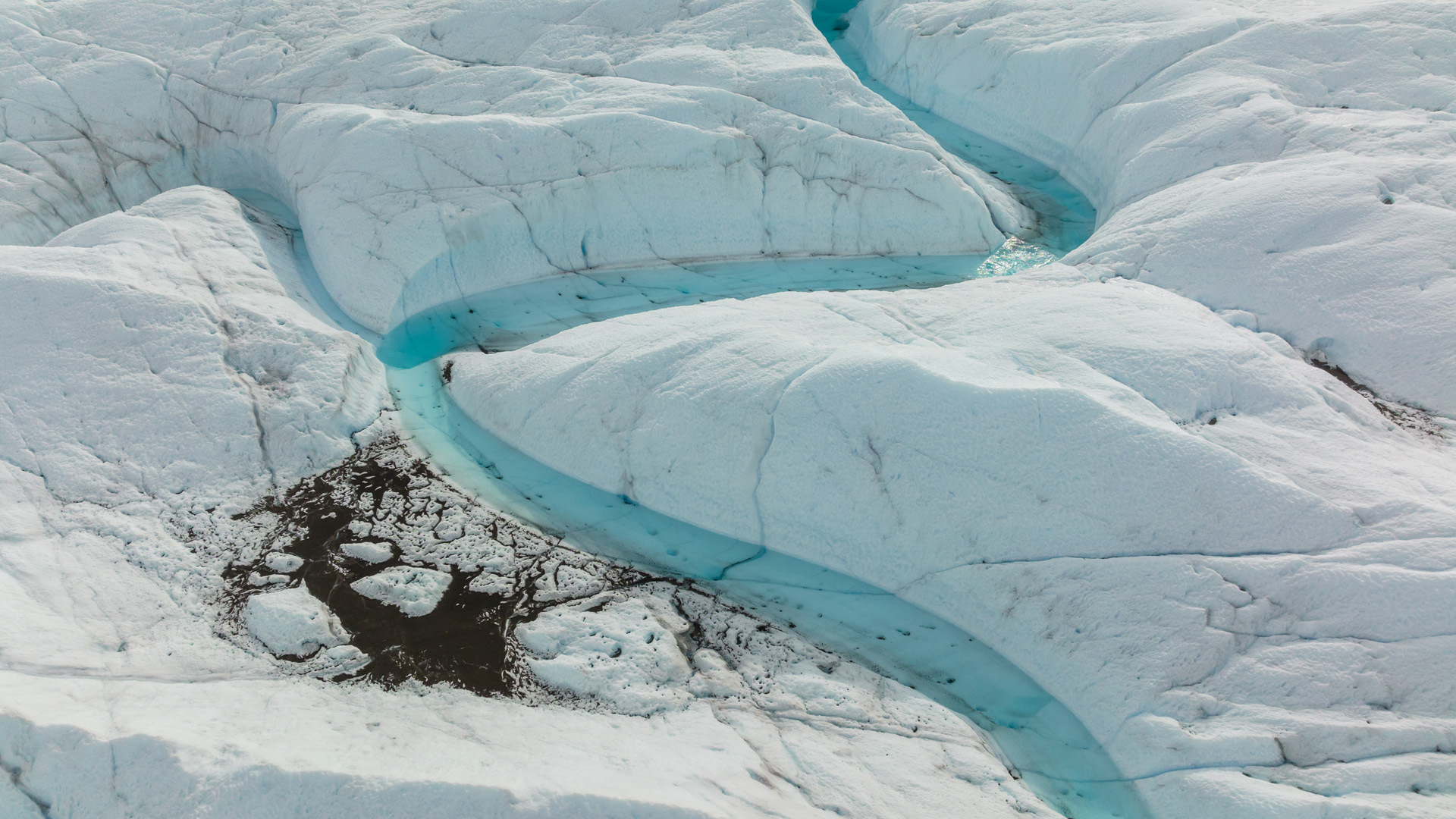Sea levels might rise much faster than thought, data from Greenland suggest
"If this is correct, the contribution of ice dynamics to overall mass loss on Greenland will be larger than what current models suggest."

Greenland's largest ice sheet is thawing at a much higher rate than expected, a new study has revealed, suggesting it will add six times more water to the rising sea levels than previously thought. And the trend may not be limited to Greenland, scientists worry.
The study used GPS measurements and computer modeling to estimate how much ice is being lost due to climate change from the Northeast Greenland Ice Stream (NEGIS), a prominent ice flow that drains ice and meltwater from Greenland's inland ice-covered basin.
The calculations revealed that, since 2012, NEGIS melting has been speeding up so much that by the end of this century, it will add more than 0.5 inches (1.3 centimeters) of water to the global ocean level. That's equivalent to the past 50 years' worth of Greenland's entire contribution to sea level rise.
Related: 10 devastating signs of climate change satellites can see from space
The NEGIS ice-melt acceleration started after the Zachariae Isstrøm glacier that protected the coastal part of the ice stream broke off in 2012, allowing warmer sea water to penetrate deeper inland. The new data has revealed that the wave of rapid ice-thinning triggered by this incident propagated much deeper upstream than previously thought. Scientists were able to measure the thinning as far as 186 miles (300 kilometers) from Greenland's northeastern coast where NEGIS meets the ocean.
"Many glaciers have been accelerating and thinning near the margin in recent decades — GPS data helped us detect how far inland these changes happening near the coast propagate," study co-author Mathieu Morlighem, a professor of Earth Sciences at Dartmouth College in New Hampshire, said in a statement. "If this is correct, the contribution of ice dynamics to overall mass loss on Greenland will be larger than what current models suggest."
Morlinghem added that similar trends might be underway in other parts of the Greenland ice sheet as the whole system might be much more sensitive to changes happening in coastal areas than previously thought.
Get the Space.com Newsletter
Breaking space news, the latest updates on rocket launches, skywatching events and more!
The study found that the accelerating melting continued even throughout the winter of 2021 and the summer of 2022, which were unusually cold in Greenland, suggesting the process will be quite difficult to stop.
"We can see that the entire basin is thinning and the surface speed is accelerating," Shfaqat Abbas Khan, a researcher at the University of Denmark and first author of the new study, said in the same statement. "Every year, the glaciers we've studied have retreated farther inland, and we predict that this will continue over the coming decades and centuries. Under present-day climate forcing, it is difficult to conceive how this retreat could stop."
If confirmed, the findings will have consequences for current sea level rise predictions, which foresee global ocean levels rising by 8 to 38 inches (22 to 98 cm) by the end of the century. The actual sea level rise is likely to be much more significant, the authors concluded, which will have catastrophic consequences for residents in low-lying regions and coastal areas around the world.
"We foresee profound changes in global sea levels, more than currently projected by existing models," Eric Rignot, a professor of Earth system science at the University of California, Irvine, who is also a co-author of the paper, said in the statement. "Data collected in the vast interior of ice sheets, such as those described in our research, help us better represent the physical processes included in numerical models and in turn provide more realistic projections of global sea-level rise."
The study was released while countries are negotiating at the 27th Conference of Parties to the United Nations Framework Convention on Climate Change (COP27) in the Egyptian coastal city of Sharm el-Sheikh. The summit, building on the outcomes of last year's COP26 climate change gathering in Glasgow, Scotland, seeks to identify solutions for a vast range of climate-related emergencies, including the energy crisis and the increasing severity of extreme weather events.
The study was published in the journal Nature on Nov. 9.
Follow Tereza Pultarova on Twitter @TerezaPultarova. Follow us on Twitter @Spacedotcom and on Facebook.
Join our Space Forums to keep talking space on the latest missions, night sky and more! And if you have a news tip, correction or comment, let us know at: community@space.com.

Tereza is a London-based science and technology journalist, aspiring fiction writer and amateur gymnast. Originally from Prague, the Czech Republic, she spent the first seven years of her career working as a reporter, script-writer and presenter for various TV programmes of the Czech Public Service Television. She later took a career break to pursue further education and added a Master's in Science from the International Space University, France, to her Bachelor's in Journalism and Master's in Cultural Anthropology from Prague's Charles University. She worked as a reporter at the Engineering and Technology magazine, freelanced for a range of publications including Live Science, Space.com, Professional Engineering, Via Satellite and Space News and served as a maternity cover science editor at the European Space Agency.
